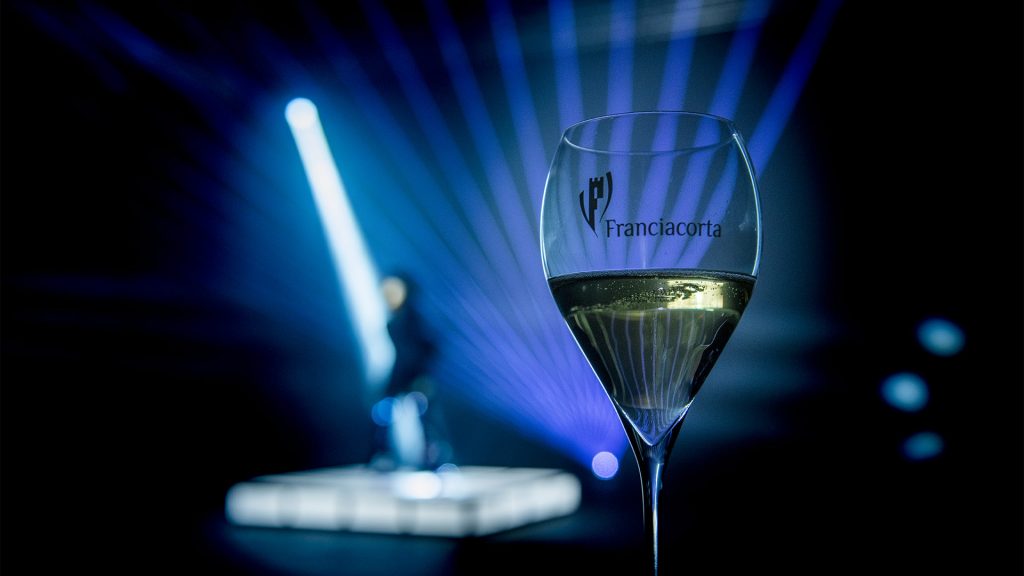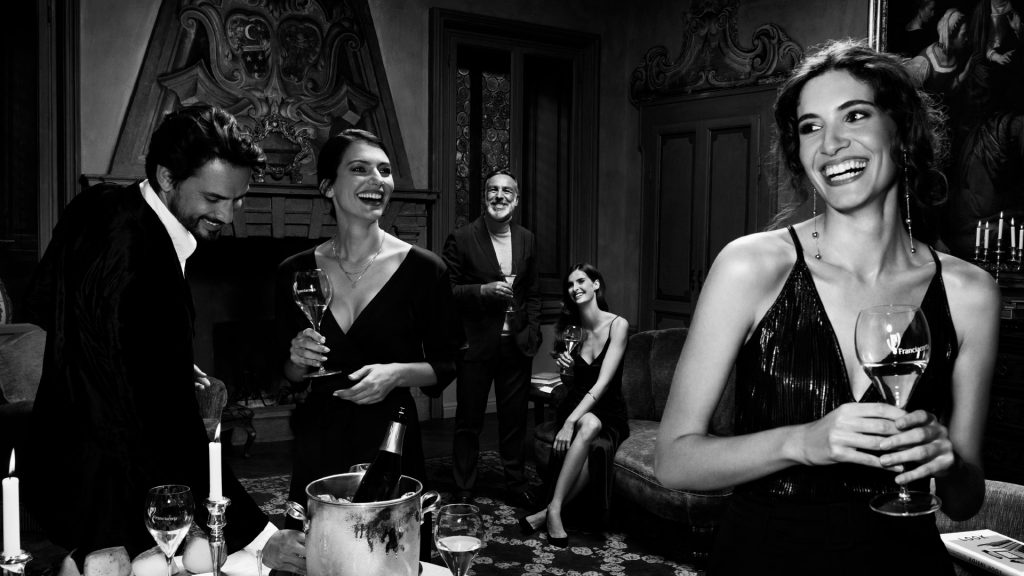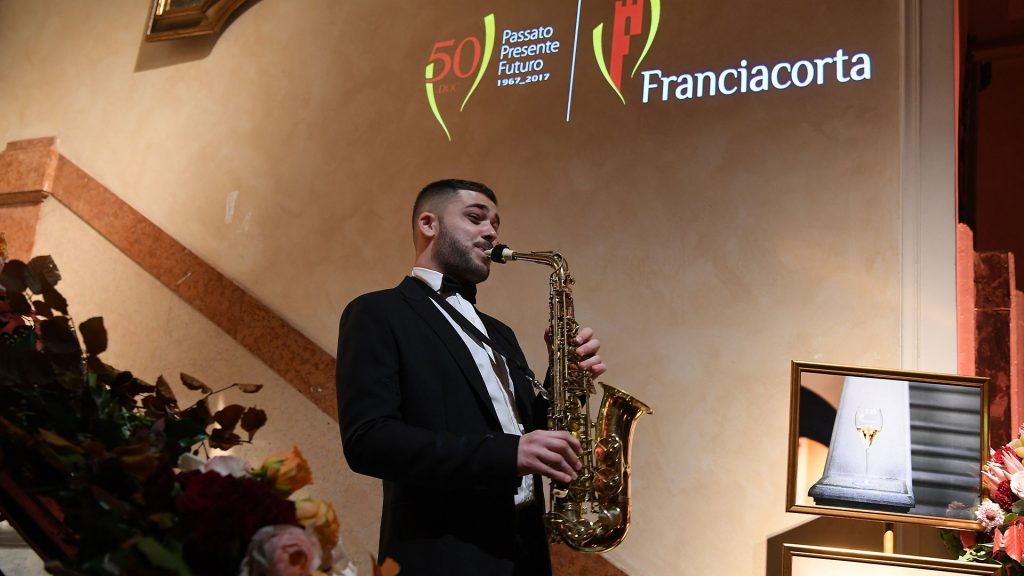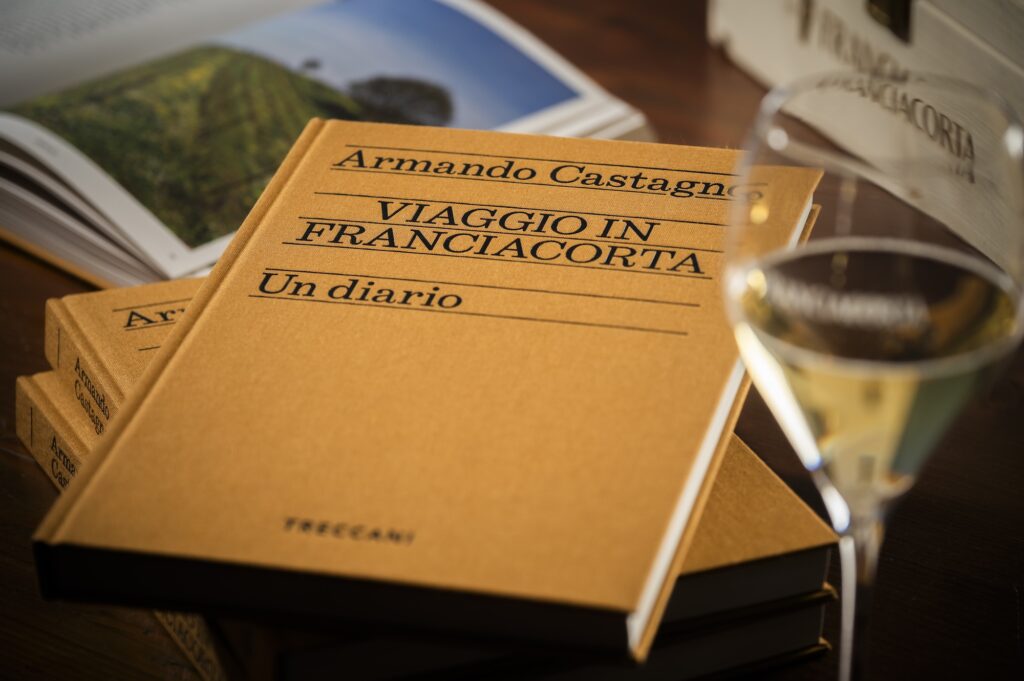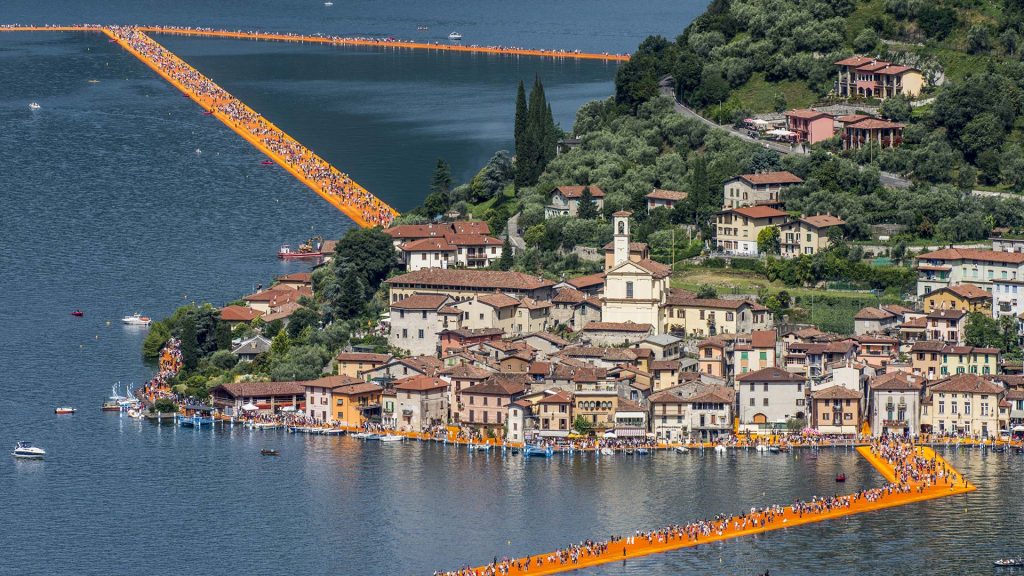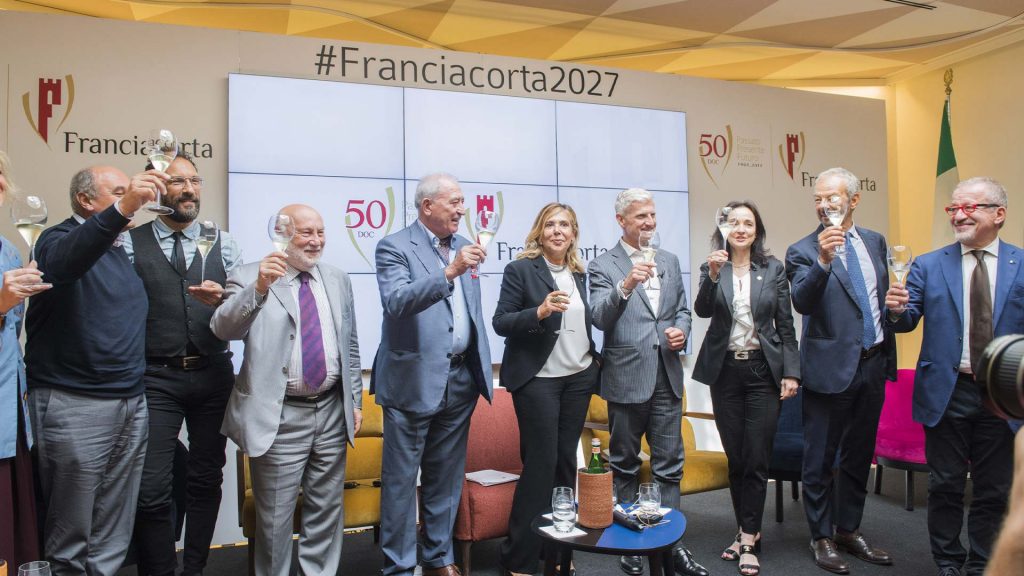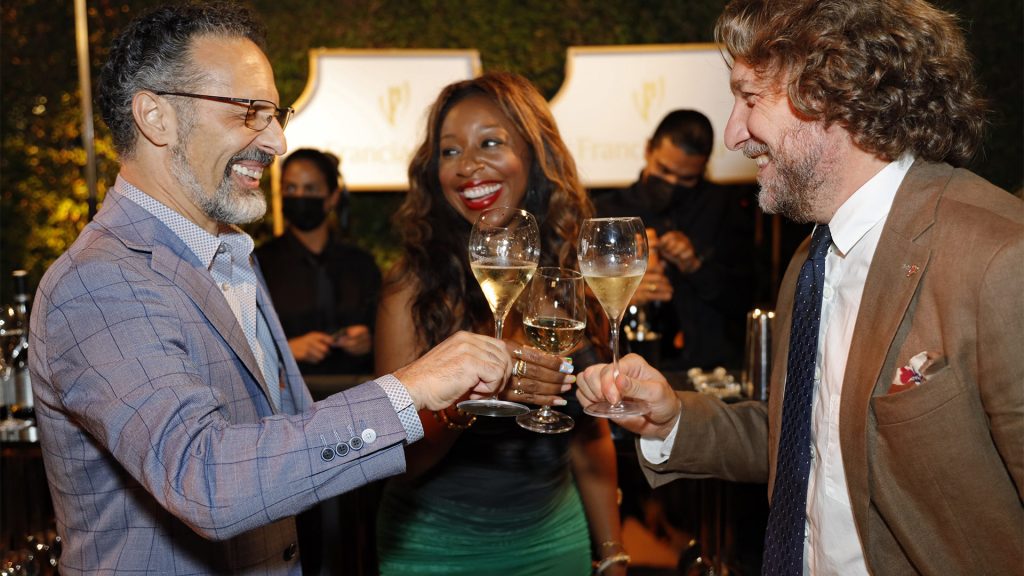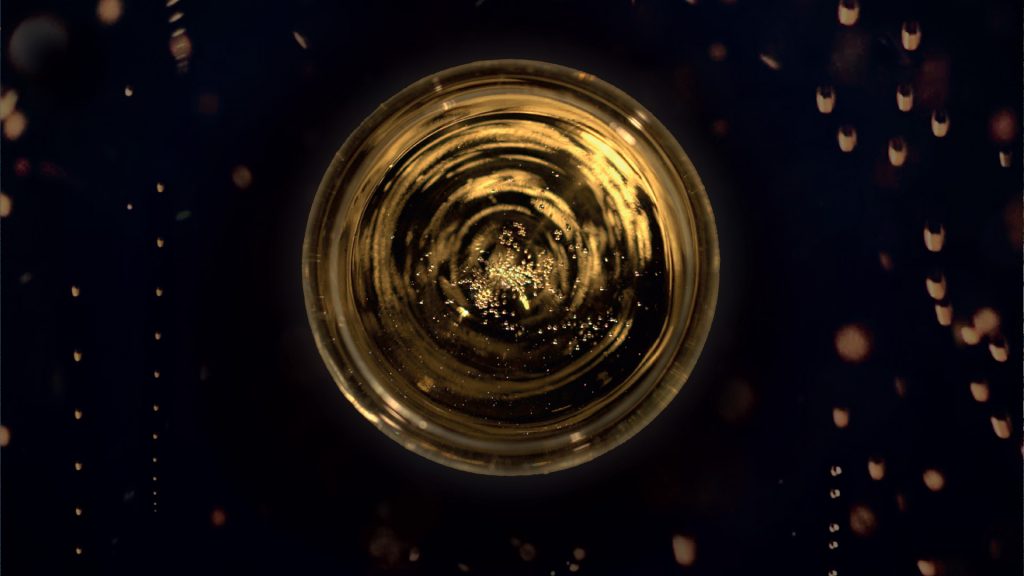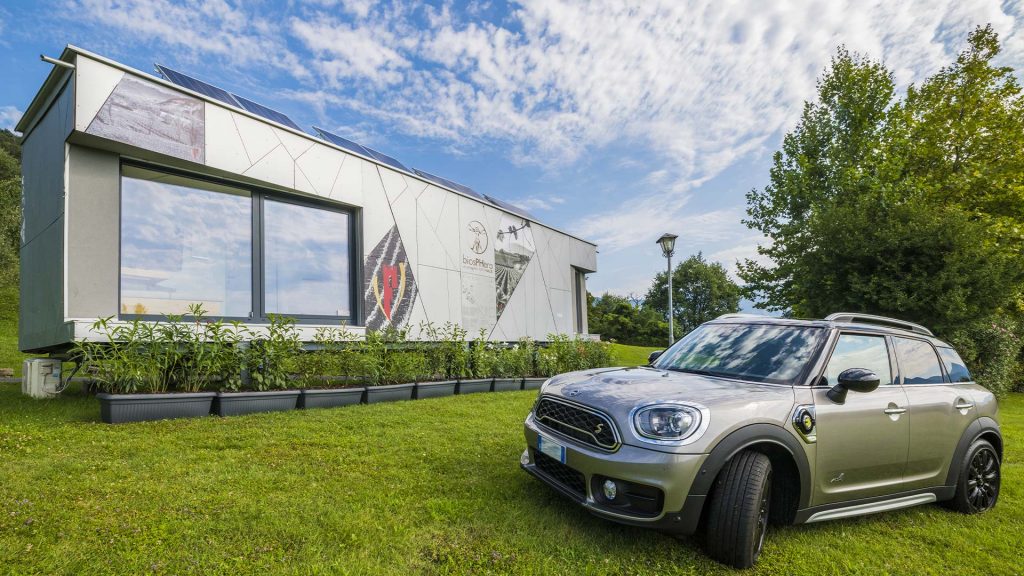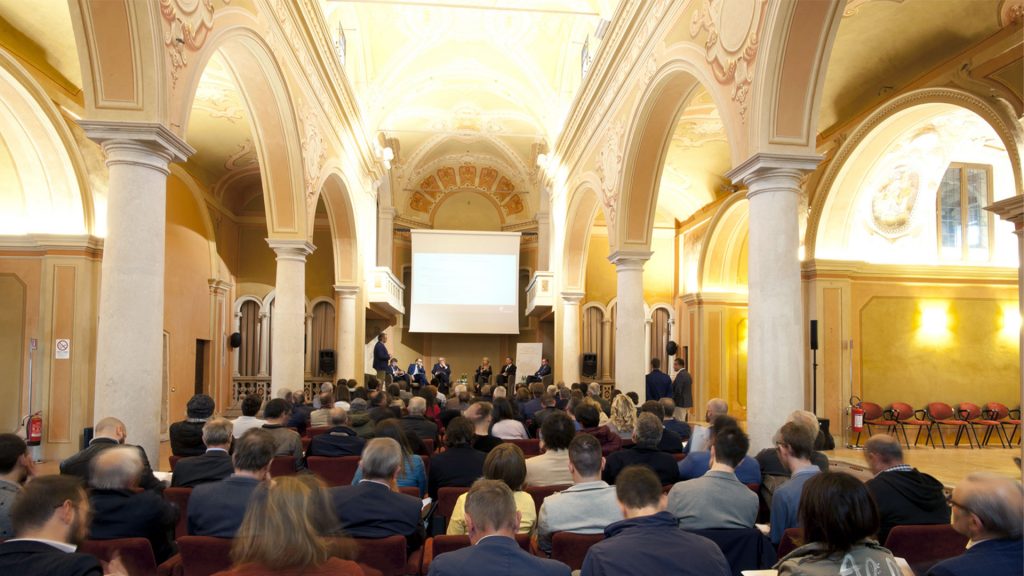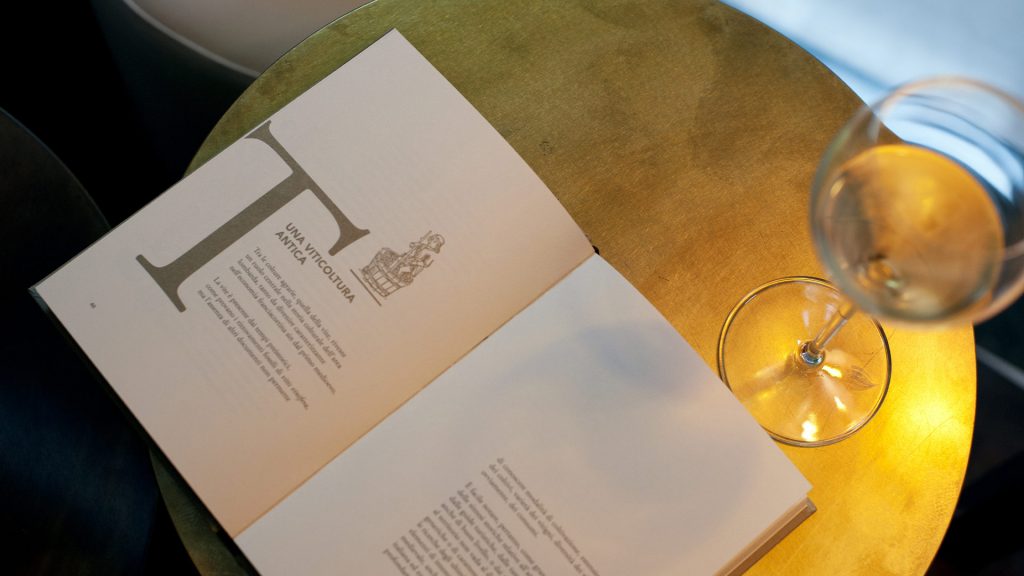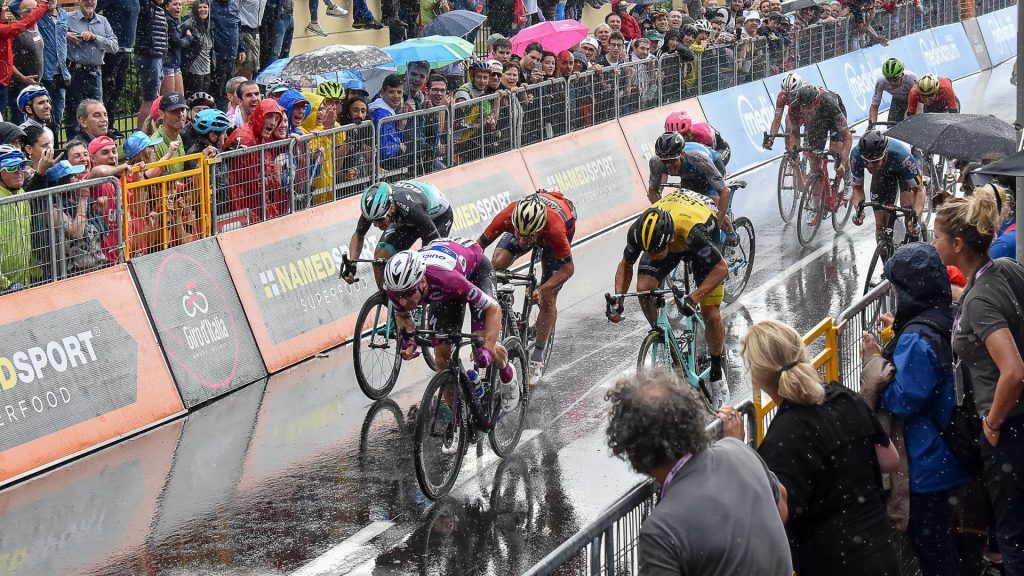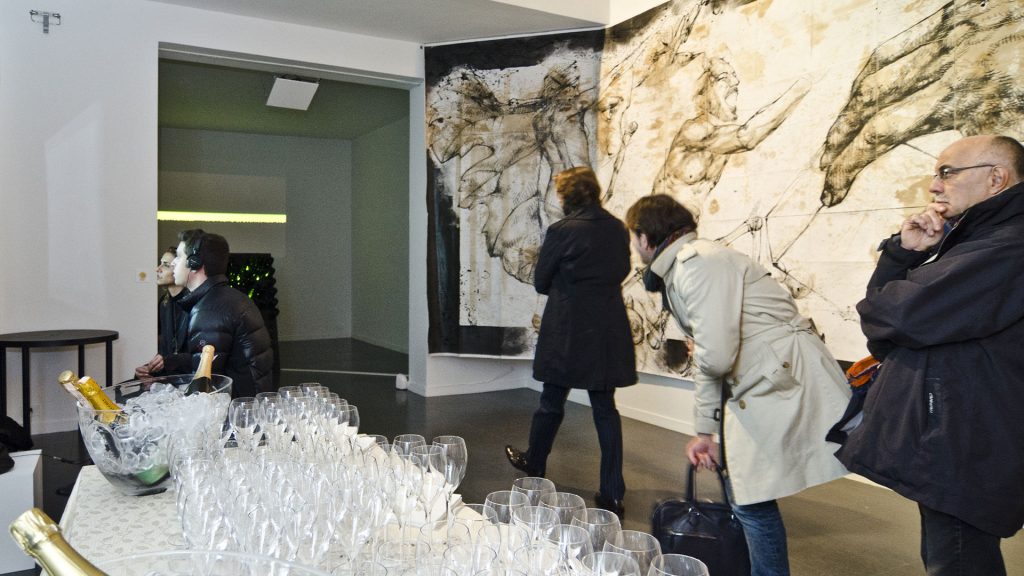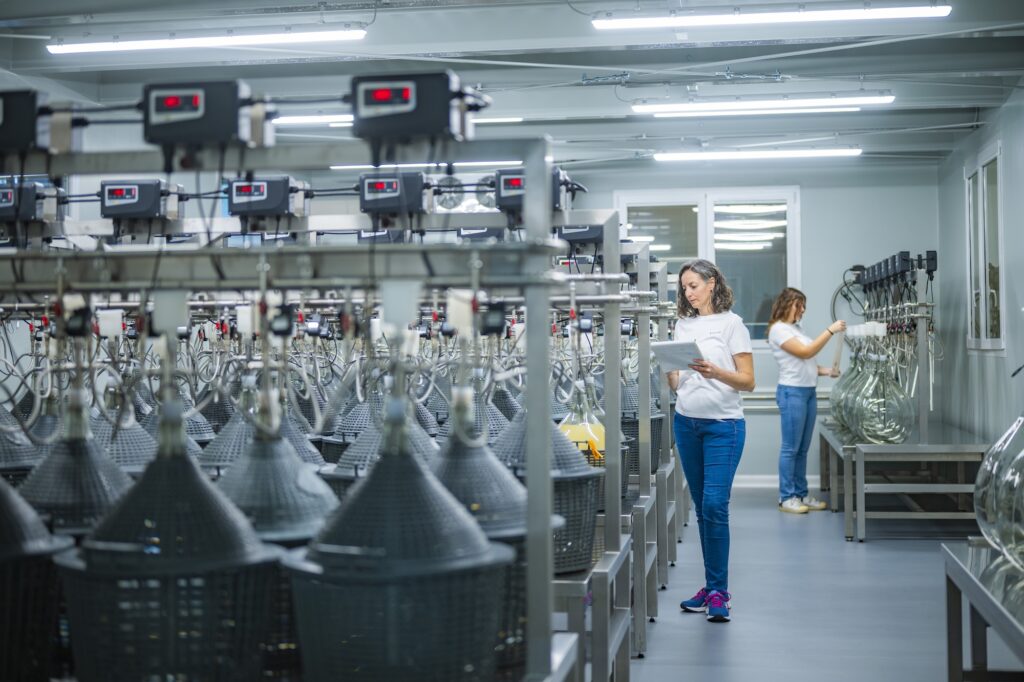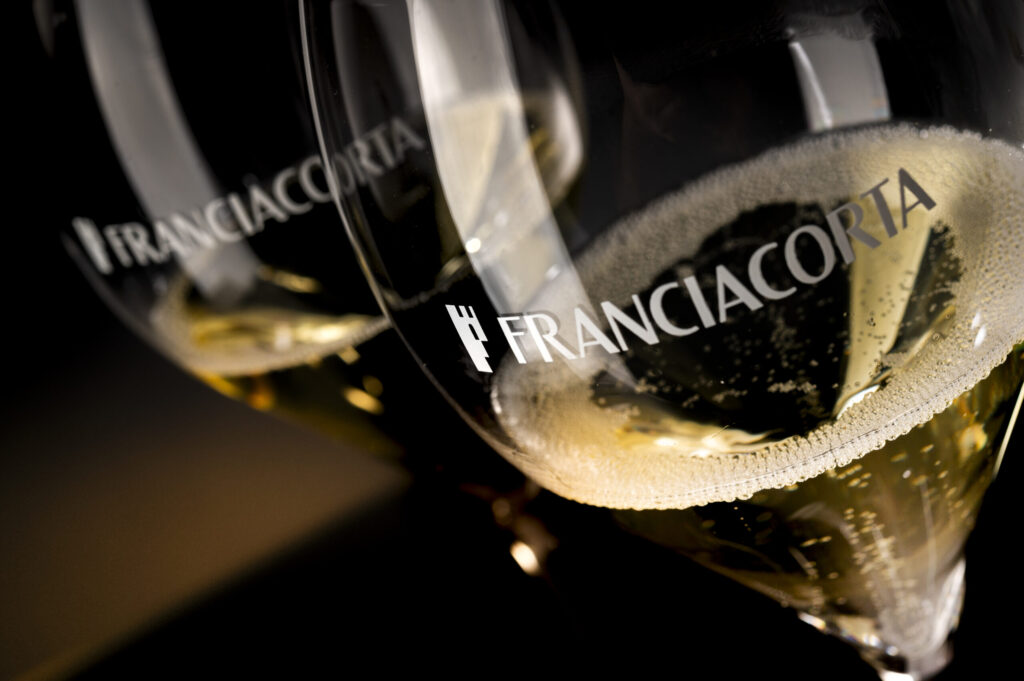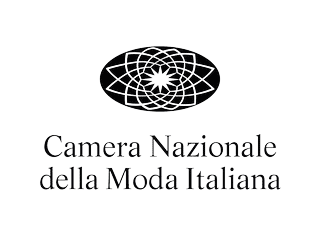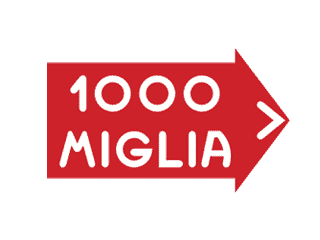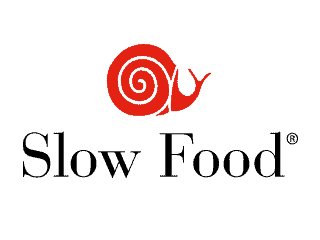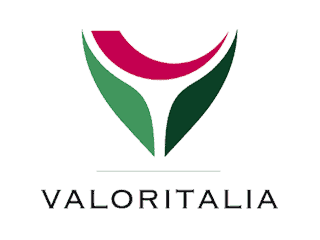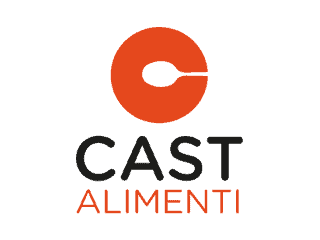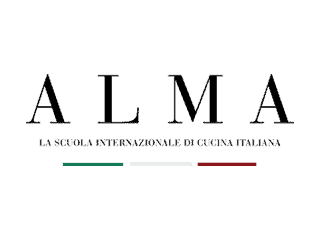Thirty-five years of quality, The Franciacorta Consortium celebrates its anniversary along with the entire chain
An area that has evolved, engaging the worlds of art, fashion, racing and film. Capable of transforming the landscape and agricultural heritage – today about one fifth of Franciacorta’s territory is covered by vineyards – and of growing alongside tourism. In fifteen years, it has more than doubled its bottle exports worldwide: +130% from 2011 to 2024.
The Franciacorta Consortium is turning 35. Founded on the initiative of 29 producers to guarantee and monitor compliance with the Franciacorta wine production regulations, today it has over 120 wineries and more than 200 members involved in the production chain of the Franciacorta DOCG, Curtefranca DOC and Sebino IGT appellations. From 5 to 7 March, three days of events to meet stakeholders and celebrate industry excellence.
FRANCIACORTA 35. IDENTITY AND PROSPECTS FOR THE WINE OF THE FUTURE
LANDSCAPE AND AGRICULTURAL HERITAGE: ALMOST A FIFTH OF FRANCIACORTA IS COVERED BY VINEYARDS
Franciacorta is not only wine, but also a territory, true natural, agricultural and landscape heritage, in which the bond with wine production is very strong. Today, almost a fifth of Franciacorta is covered by vineyards. Of a total area of 20,370 hectares spread over 19 municipalities, the total planted area is 3,634 hectares.
On the other hand, the cultivation of vines here has very ancient origins and has been a constant throughout the centuries: from Roman times to Late Antiquity and up to the Middle Ages, the area’s soil and climate conditions have always favoured the growth of vineyards. The first document attesting to Curtes Francae dates back to 1270, and in the mid-16th century Agostino Gallo and Girolamo Conforti praised the ‘mordaci’ wines produced. In 1809 the Napoleonic Land Register provided a snapshot of the over one thousand hectares of land then specialised in making ‘mordaci’ wines and a similar number of hectares of vineyards mixed with other crops. The first recognition as Denominazione di Origine Controllata in 1967 and, above all, the creation of the Franciacorta Consortium in 1990, which led to the awarding of the DOCG label five years later, laid the foundations for a development that could best combine the protection of the product with that of the landscape.
Today, more than half of the vineyards – 56% to be precise – that cover Franciacorta were planted between 15 and 30 years ago, i.e. since the Consortium was founded. In detail, 30% of the vineyards are between 15 and 19 years old, while 26% are between 20 and 29 years old. The oldest vineyards (over 30 and 40 years old) account for 10% of the total, while the newest vineyards are in 10% of cases between 10 and 14 years old, in 12% of cases between 4 and 9 years old, and those less than three years old are currently around 8%.
THE EVOLUTION OF THE FRANCIACORTA CONSORTIUM KEEPS PACE WITH THE DEVELOPMENT OF TOURISM
Not just wine: back in 2000, with the creation of the ‘Strada del Franciacorta’ Association, the Consortium aimed to promote the area’s tourism potential, which goes far beyond its rich variety of wine and food. In addition to the many wineries that make the area so unique, Franciacorta is also home to important museums and historical sites, period villas, charming natural places (parks, botanical gardens and protected areas), as well as abbeys and churches rich in history and beauty, and the ancient seats of the monastic orders to which we owe the reclamation of the land and the introduction of the vine. Added to this is a fabric of farm holiday facilities, restaurants, wine bars, hotels and B&Bs that has made top quality catering and hospitality such a strong point.
Over the past 30 years, in parallel with the development of the Consortium, tourism in the province of Brescia has also grown significantly. A comparison of data from the last 15 years shows visitor numbers growing from 1.8 million in 2008 (of which 118,633 in farm holiday facilities and the remainder in other facilities) to 3 million in 2023 (of which 264,340 in farm holiday facilities) in a steady upward trend, except for the years marked by the Covid pandemic. A similar trend can be seen for length of stay, which rose from 7.9 million days in 2008 to 10.6 million in 2023, peaking at 11.3 million days in 2022.
A SUSTAINABLE CULTURE AT ALL STAGES OF PRODUCTION
The concept of sustainability has always been part of the philosophy of the Franciacorta Consortium, which has been committed from the outset to caring for the land from which this wine of excellence originates. A green soul therefore, that existed long before this issue became as topical as it is in recent years.
This is demonstrated by the many projects and initiatives implemented in this regard, which aim to optimise production while respecting resources and favouring the choice of environmentally friendly materials and, whenever possible, renewable energy sources.
The most important activities of the last 15 years include the Ita.Ca® (Italian Wine Carbon Calculator) Project, an international methodology capable of estimating the amount of emissions generated by the production process. In 2010, the Franciacorta Consortium was the first and only one in Italy to promote the monitoring of greenhouse gas emissions at a territorial level, covering more wine estates than in other countries, about 60% of the Franciacorta DOCG vineyard surface area. The Biopass project for the study of biodiversity in the vineyard dates back to 2013, while in 2015, in addition to the plant pest monitoring already in place, CO2 flux in the vineyards was also monitored. In 2019, through the F.A.RE.SU.BIO project, it was possible to assess the evolution of organic matter in the soil and study functional biodiversity.
Among the many green practices, it is also worth mentioning how the Franciacorta Consortium promoted the Erbamat project, which has brought this ancient native grape variety, known since 1500, back onto the scene. Having approved Erbamat within the varietal framework of Franciacorta, producers can therefore also find new development opportunities through this grape variety that has been an integral part of the territory for centuries.
INVESTMENT AND RESEARCH PROJECTS
The Franciacorta Consortium has long been committed to creating a viticulture that harmonises as effectively as possible with the environment. This is why investment in research projects capable of assessing the immediate and future effects of each intervention in the field, improving and optimising production, respecting resources and preserving and increasing biodiversity are of paramount importance, with a focus on all those techniques that allow the use of plant health products to be reduced.
At the core of this commitment are the zoning studies that began in 1992 through a partnership between the Consortium and the University of Milan. Identifying the area’s six soil types enabled farming to be adapted to each specific context. Moreover, these studies have become essential tools in the hands of winegrowers, agronomists and oenologists in their vineyard choices.
This has led to various actions over the years that have made it possible to pursue the objective of an increasingly efficient and sustainable viticulture: from plantings adapted to the type of soil to the reduction of fertilisation thanks to careful under-vine and inter-row land management, including a decreasing and optimised use of plant health products, studies on the monitoring of pathogens and biodiversity in the vineyards by analysing insect populations and studying the relationship of these aspects with the health of the vines. In addition, the Franciacorta Consortium drew up the first thoroughgoing regulation on the use of crop protection products to regulate the way such products are distributed in the vineyards, with more restrictive limits than those laid down in the regulations.
October 2024 also saw the inauguration of the Microvinification Laboratory, a project resulting from the collaboration between the Franciacorta Consortium and Accademia Symposium. Financed within the context of the NRRP tender designed to strengthen the laboratories of the Istituti Tecnologici Superiori – ITS Academy, the laboratory offers new opportunities for the development of advanced wine-growing techniques and one of its objectives is to train future generations of professionals in the sector. Microvinification and experimental wine storage activities are carried out in the laboratory, replicating the wine production process on a small scale, including with grapes from experimental vineyards in the DOCG area covered by this research.
Investments in research projects are therefore constant: there are currently 13 ongoing projects with the University of Milan involving 91 vineyards and another 4 with the University of Verona on 24 vineyards. These are supplemented by the three research projects launched on 15 vineyards with Agrea Centro Studi, the two studies launched with Fondazione Edmund Mach and the collaboration with the Sustainable Agricultural Systems degree programme at the University of Brescia.
Infographics
March 5-6-7: 3 days dedicated to the 35th anniversary celebrations
Three days of meetings, insights and prestigious guests to discuss shared values, strategic synergies and the future: this is how the Franciacorta Consortium celebrated its first 35 years, with an event combining tradition and innovation, roots and international vision.
It was a special occasion at which the Italian Minister of Agriculture and greater admirer of Franciacorta, Francesco Lollobrigida, took part, paying homage to the Consortium for its efforts to safeguard this territory of excellence. “You have taken on the challenges facing you with great determination,” said the minister, “on the strength of strict regulations which are the cornerstone to a product which is much appreciated the world over.”
It was Consortium President Silvano Brescianini who launched both days, underlining “how lucky it is to have inherited such an extraordinary territory and the responsibility this gives it to safeguard it for future generations.”
SHARED VALUES AND STRATEGIC PARTNERSHIPS
The theme of the first day was the importance of generating synergies and relationships with a range of sectors, from fashion to food, luxury to hospitality. Carlo Capasa, President of the Camera Nazionale della Moda Italiana, remembered the “historic partnership between Franciacorta and the world of fashion” stressing that both sectors are “increasingly sustainability-oriented and must be examples of good practice.”
Marco Do, Michelin Italia’s Communications and External Relations Director, focused on “the professionalism and prestige which the Michelin Guide and the Franciacorta Consortium have in common”, and expressed the hope that “the partnership which began in 2021 will continue to develop.”
Next to speak were Enrico Buonocore, CEO and founder of Langosteria, and Goffredo “Dino” Dell’Appennino, General Manager of Bulgari Hotel Milano, who underlined that Franciacorta is “synonymous with excellence and quality”, fundamental values in the restaurant and luxury hospitality sectors too.
IDENTITY AND OUTLOOK FOR THE WINE OF THE FUTURE
The second day opened with significant data elaborated by Nomisma: 95% of consumers in Italy are familiar with Franciacorta wine and 61% have drunk it at least once over the last year. The data showed a drop in red wine sales over the years and a growth in the sparkling wine sector both in Italy and worldwide. Specifically in 2010 in Italy, 8% of the bottles of wine drunk were sparkling wines while the corresponding figure in 2023 was 15%. In the same period red wine sales dropped by six percentage points, from 43.9% to 37.6%, a trend which is also visible in the large scale distribution networks which account for around 60% of end consumption. Denis Pantini, director of Nomisma Wine Monitor, illustrated the main drivers of growth in the future: sustainability, local character and health consciousness. Sustainability certification, in particular, is destined to grow in importance, above all for Gen Z, with growth forecasts of 93%.
Attilio Scienza, viticulture professor at Università degli Studi di Milano, underlined the importance of biodiversity and local vocation while Isabella Ghiglieno and Luisa Mattedi talked about the role played by agricultural ecosystems in wine quality.
International perspectives played centre stage with Essi Avellan, Finnish Master of Wine, and Amy Wislocky, editor di Decanter. Avellan noted that sparkling wine is the “only growth sector in the United States” while Wislocky reiterated “Franciacorta’s top quality and the need to enhance its visibility abroad.”
Lastly cartographer Alessandro Masnaghetti illustrated the way “detailed local mapping can further enhance wine production”, reinforcing its identity and authenticity.
A VISION OF THE FUTURE
At the end of this three-day event a technical tasting by Italian Masters of Wine Gabriele Gorelli, Andrea Lonardi and Pietro Russo offered a further opportunity to celebrate Franciacorta. The celebrations for this 35th anniversary will conclude this weekend at the Festival di Primavera spring event melding culture, food and wine and tradition in an authentic experience.
With an eye to the future Silvano Brescianini reiterated the optimism the world of wine is known for: “farmers are optimists by definition, and this is especially true of winemakers. If they weren’t they’d find something else to do.”
An important anniversary, then, and above all a starting point for new milestones to achieve together.
Interviews with the speakers of the conferences on March 5 and 6



